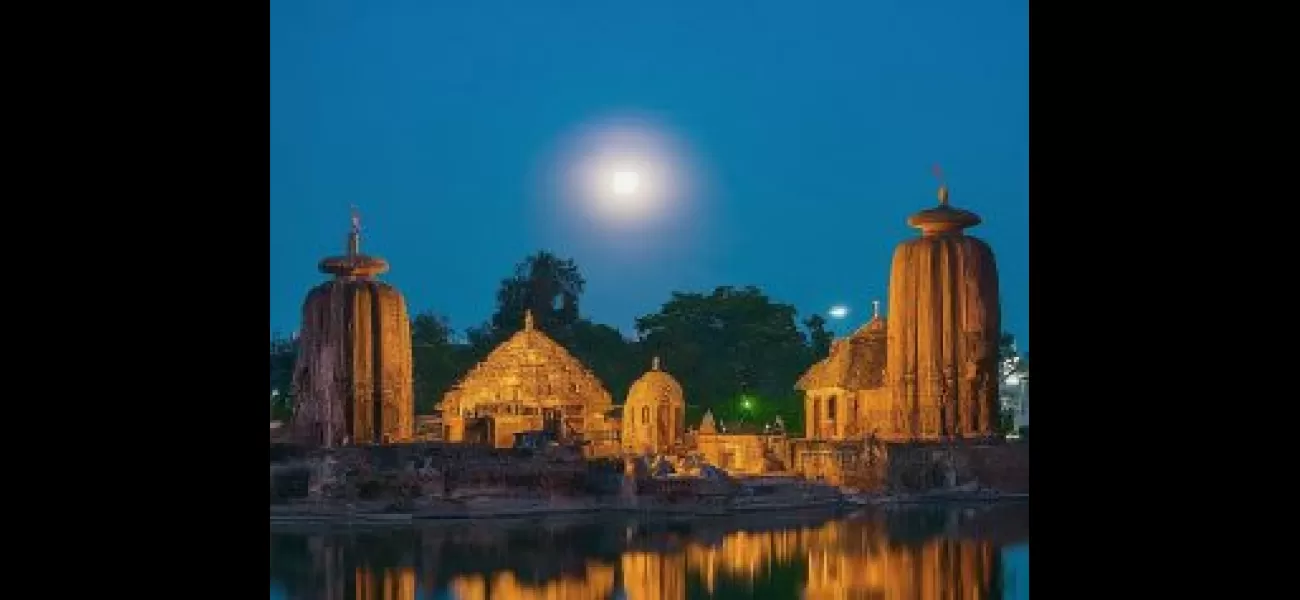The first supermoon of the year will be visible in Indian skies today.
Celestial treat in India as full, blue supermoon will light up the night sky on Monday, peak on Tuesday morning for those in Nepal and eastward.
August 18th 2024.

Attention all stargazers in India! Prepare to be dazzled by a spectacular celestial event coming your way. According to NASA, a full, blue supermoon will be gracing the night sky on Monday. This is just one of the four supermoons that are set to occur this year.
From Sunday morning through early Wednesday morning, the moon will appear full. However, its peak will be on Tuesday morning for those in Nepal, Asia, India, and Australia. So be sure to keep your eyes peeled during the night of August 19 and into the early morning of August 20.
Now, you may be wondering, what exactly is a supermoon? Well, the term was coined by astrologer Richard Nolle in 1979 and refers to a new or full moon that happens when the moon is within 90 percent of its closest distance to Earth. These full supermoons are known for their grandeur and brightness, making them a sight to behold.
Not only is this moon a supermoon, but it is also a blue moon. No, it won't actually appear blue, but the term "blue moon" has a fascinating history. Dating back to 1528, it has been linked to various origins such as an old English phrase meaning "betrayer moon" or rare atmospheric conditions that give the moon a blue tint.
Interestingly, the Algonquin tribes have a traditional name for the August full moon - the "Sturgeon moon." This is because it is the time of year when sturgeon fish are easily caught. Other names for this moon include the red moon, corn moon, barley moon, and herb moon. And for all you science fiction fans out there, this Sturgeon moon is a nod to author Theodore Sturgeon, who made significant contributions to Star Trek.
But the supermoon fun doesn't end here. The next one is set to occur on September 17, 2024, and is also known as the harvest moon. Not only that, but it will also be partially eclipsed by Earth as a portion of it passes into our planet's shadow. How cool is that?
And for those who can't get enough of supermoons, there is a third one on the horizon. On October 17, the hunter's moon will make an appearance, and it will also be the closest full moon of the year. And last but not least, the fourth and final supermoon of the year will occur on November 15.
So mark your calendars and don't miss out on these extraordinary lunar events. Happy stargazing!
From Sunday morning through early Wednesday morning, the moon will appear full. However, its peak will be on Tuesday morning for those in Nepal, Asia, India, and Australia. So be sure to keep your eyes peeled during the night of August 19 and into the early morning of August 20.
Now, you may be wondering, what exactly is a supermoon? Well, the term was coined by astrologer Richard Nolle in 1979 and refers to a new or full moon that happens when the moon is within 90 percent of its closest distance to Earth. These full supermoons are known for their grandeur and brightness, making them a sight to behold.
Not only is this moon a supermoon, but it is also a blue moon. No, it won't actually appear blue, but the term "blue moon" has a fascinating history. Dating back to 1528, it has been linked to various origins such as an old English phrase meaning "betrayer moon" or rare atmospheric conditions that give the moon a blue tint.
Interestingly, the Algonquin tribes have a traditional name for the August full moon - the "Sturgeon moon." This is because it is the time of year when sturgeon fish are easily caught. Other names for this moon include the red moon, corn moon, barley moon, and herb moon. And for all you science fiction fans out there, this Sturgeon moon is a nod to author Theodore Sturgeon, who made significant contributions to Star Trek.
But the supermoon fun doesn't end here. The next one is set to occur on September 17, 2024, and is also known as the harvest moon. Not only that, but it will also be partially eclipsed by Earth as a portion of it passes into our planet's shadow. How cool is that?
And for those who can't get enough of supermoons, there is a third one on the horizon. On October 17, the hunter's moon will make an appearance, and it will also be the closest full moon of the year. And last but not least, the fourth and final supermoon of the year will occur on November 15.
So mark your calendars and don't miss out on these extraordinary lunar events. Happy stargazing!
[This article has been trending online recently and has been generated with AI. Your feed is customized.]
[Generative AI is experimental.]
0
0
Submit Comment





